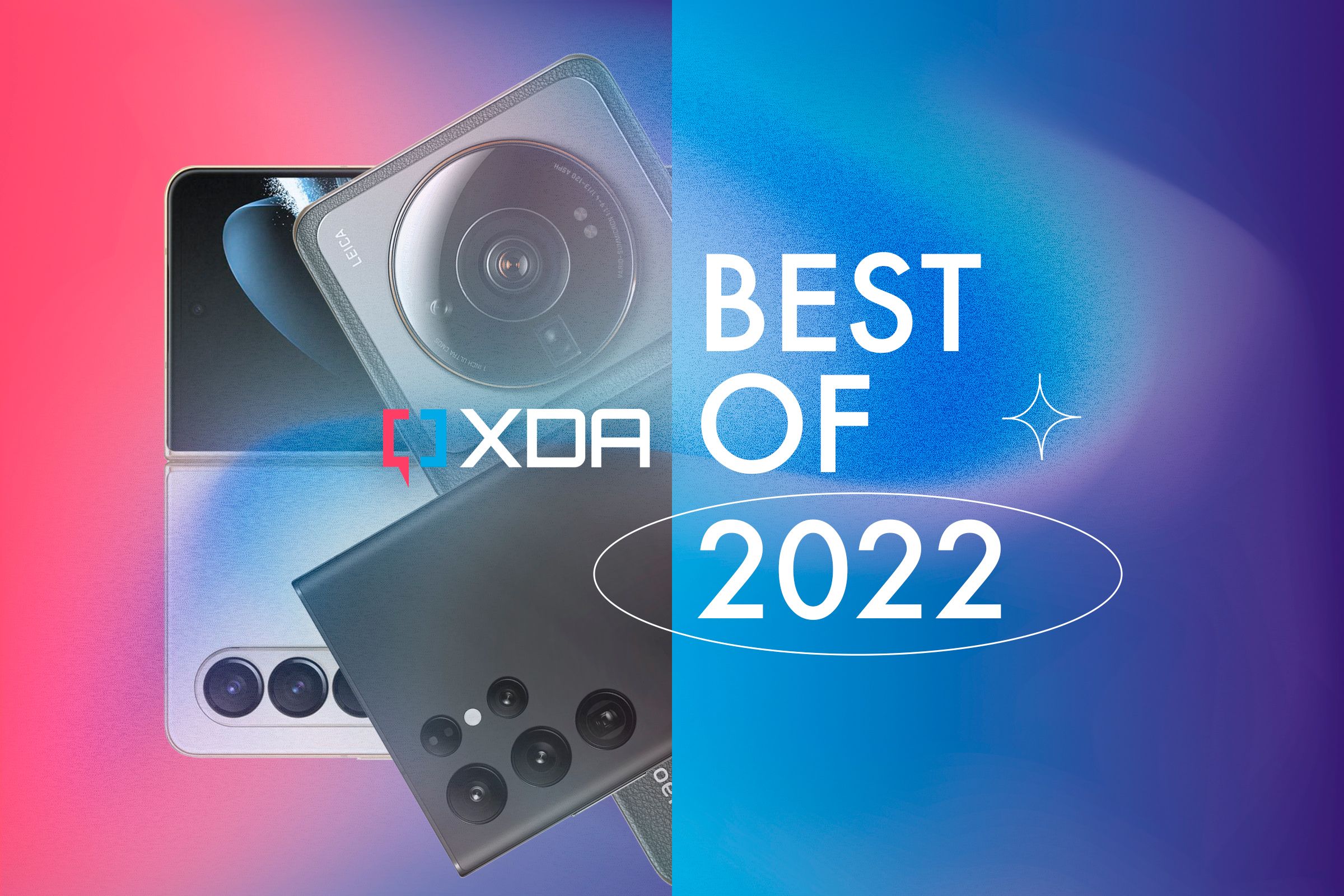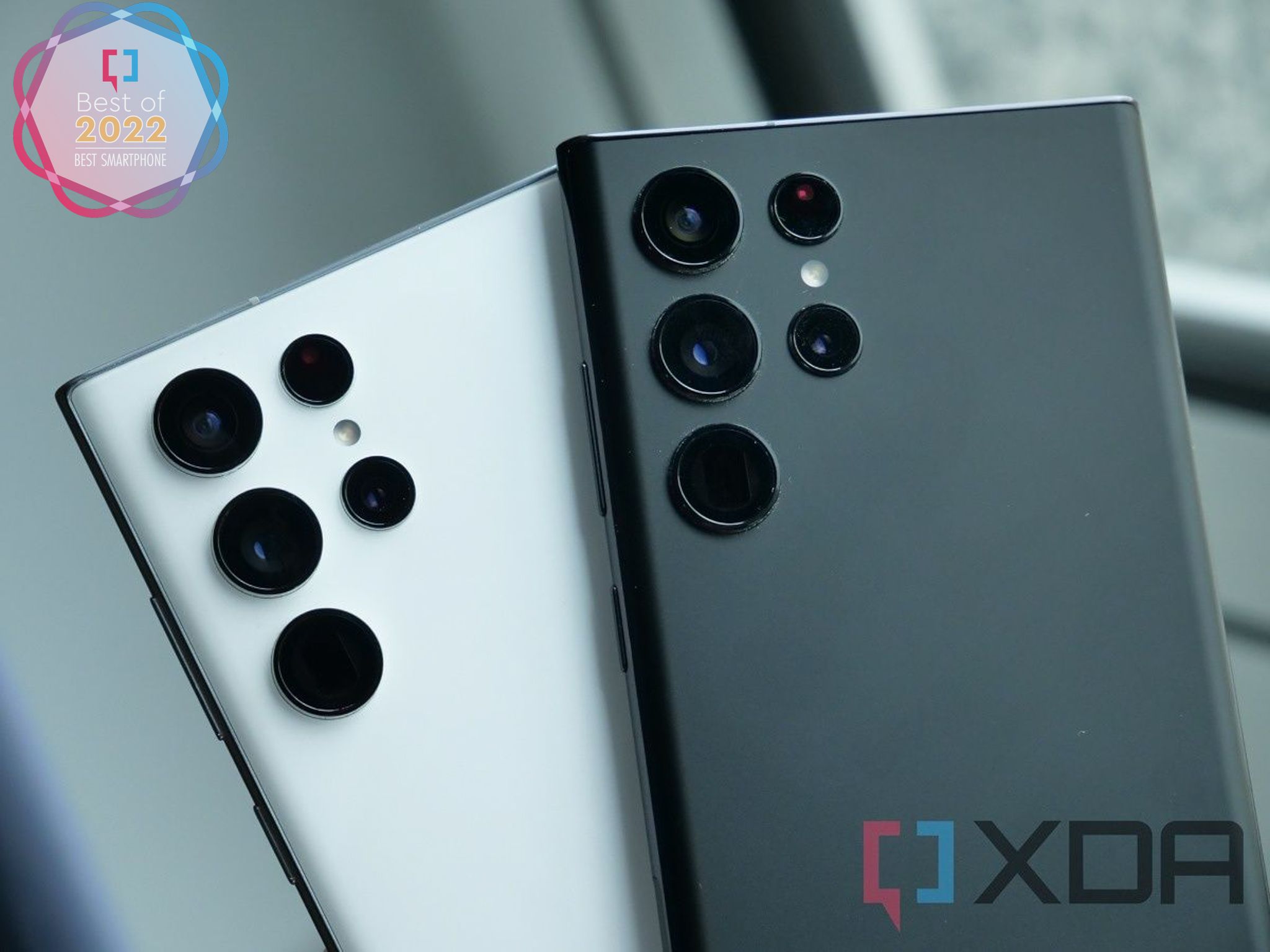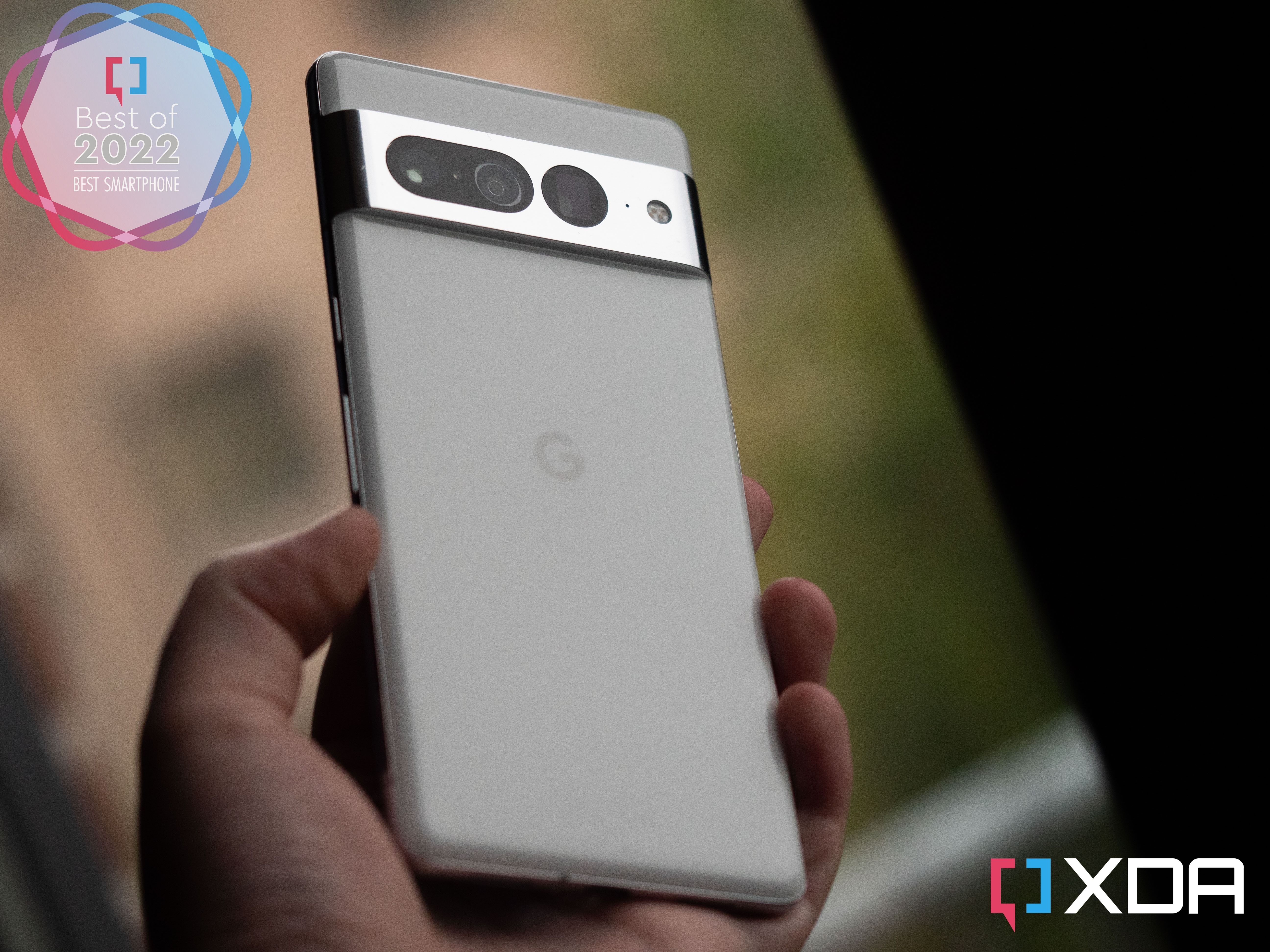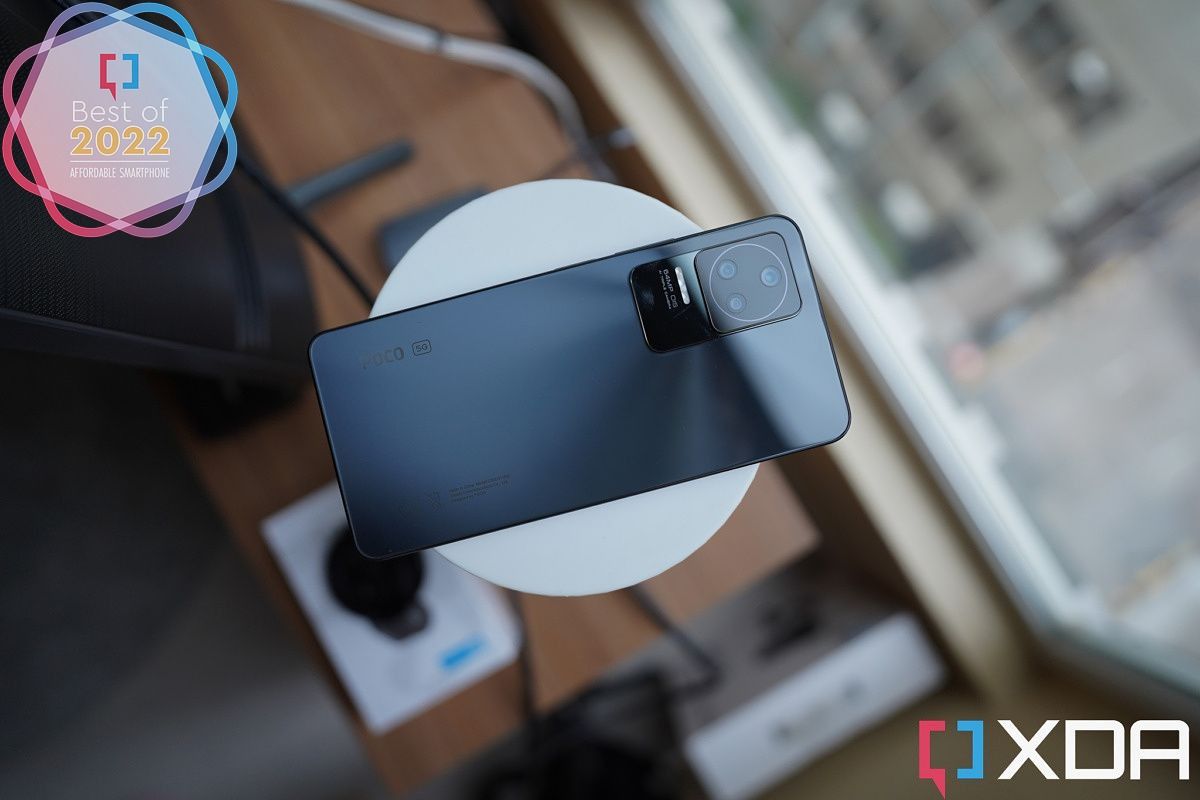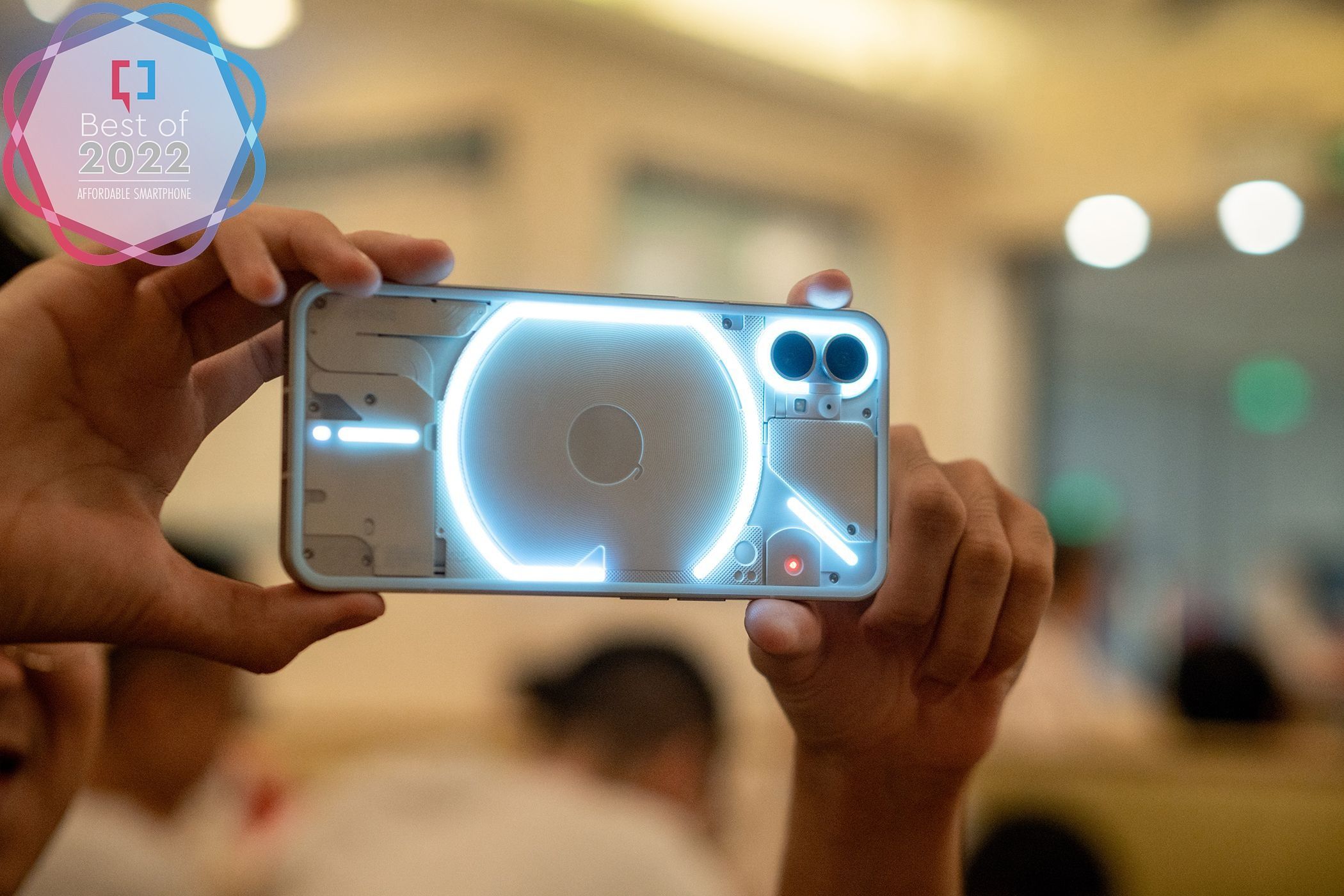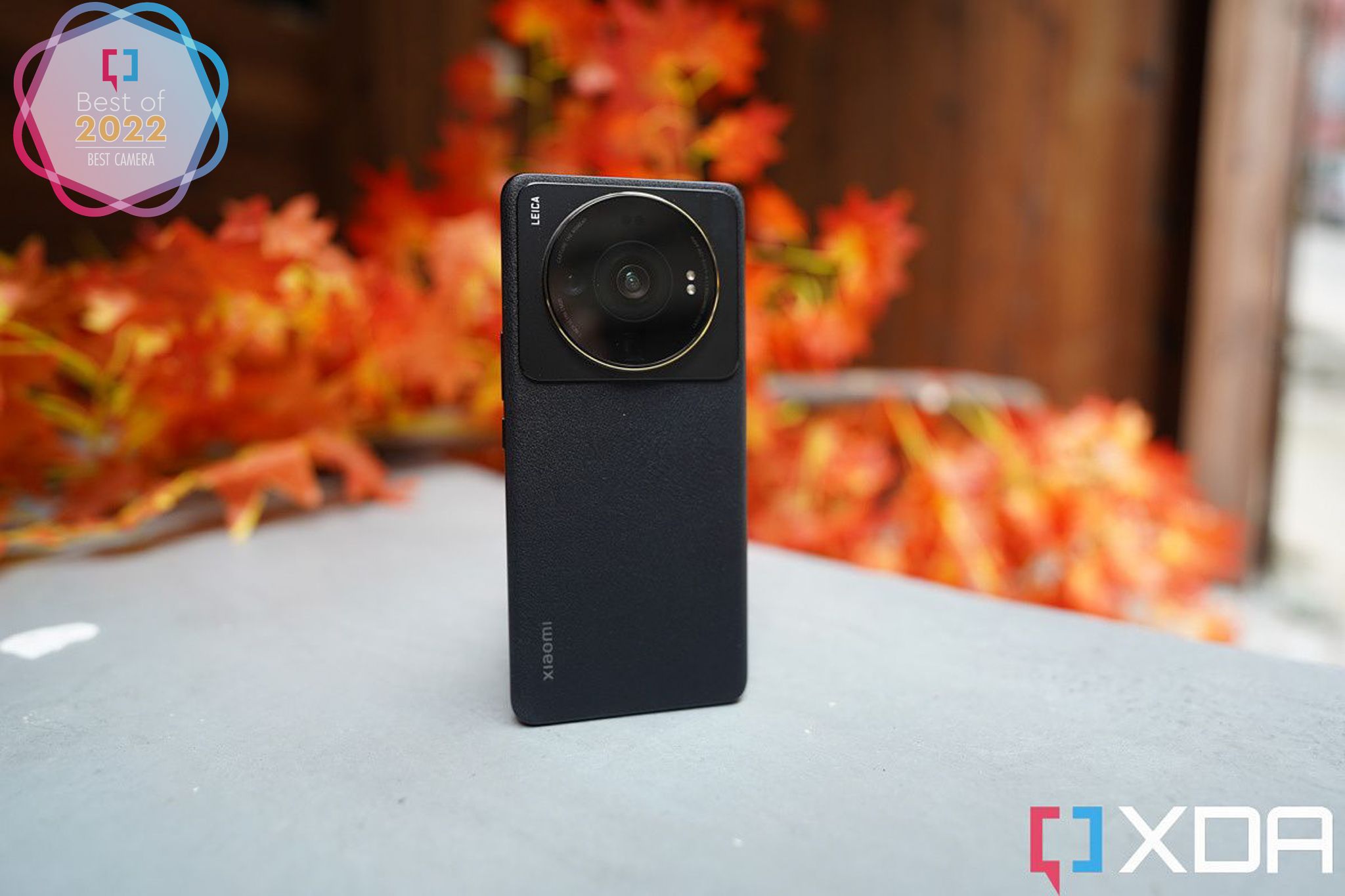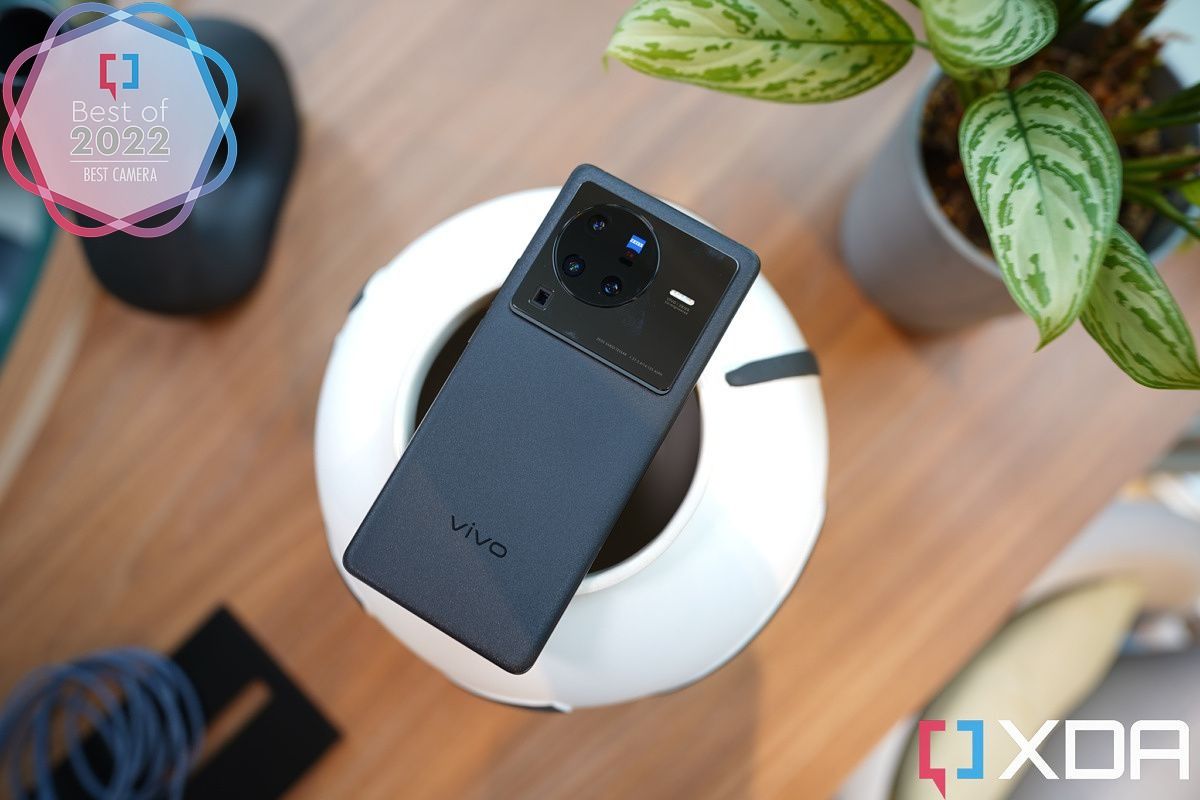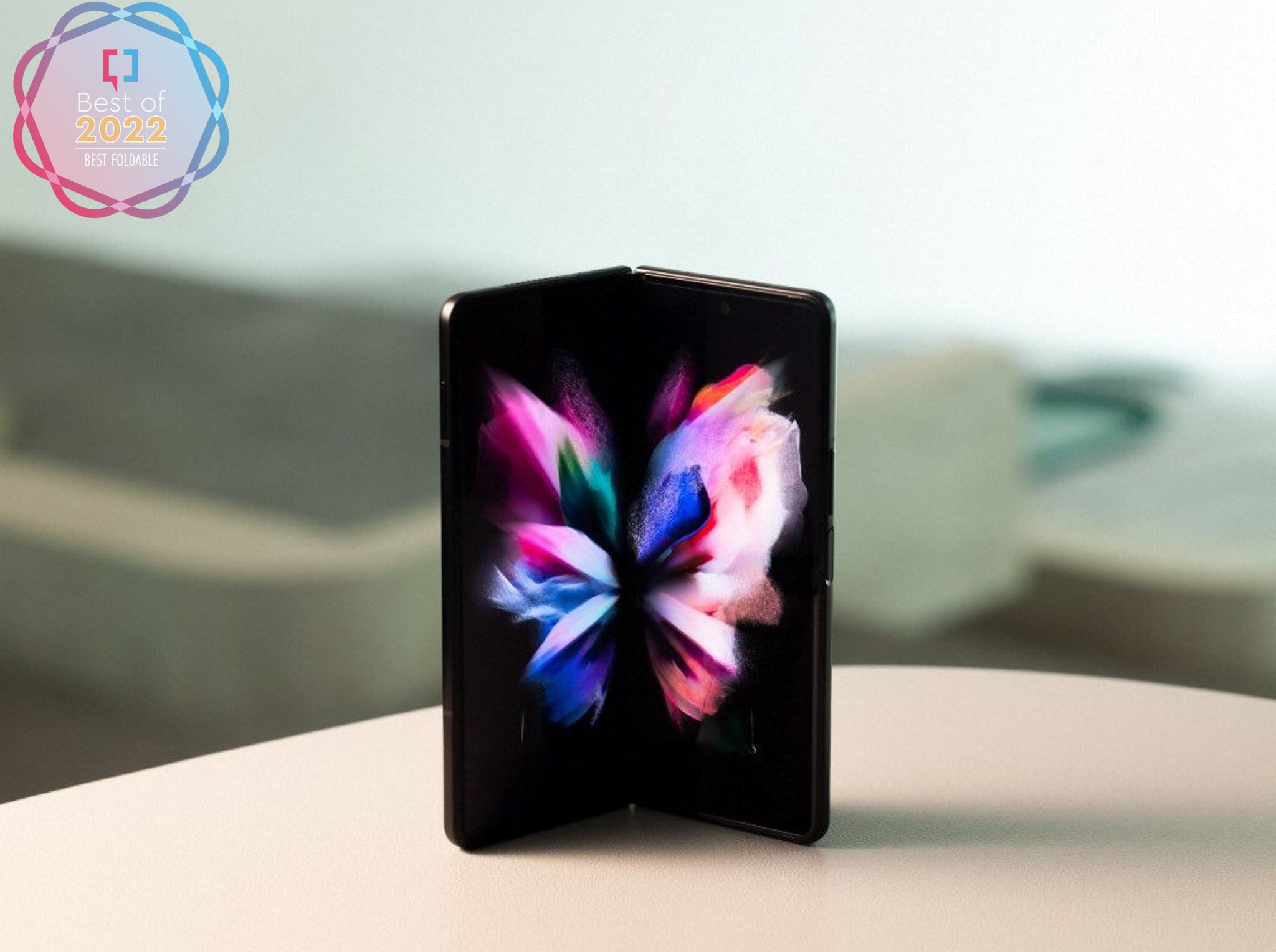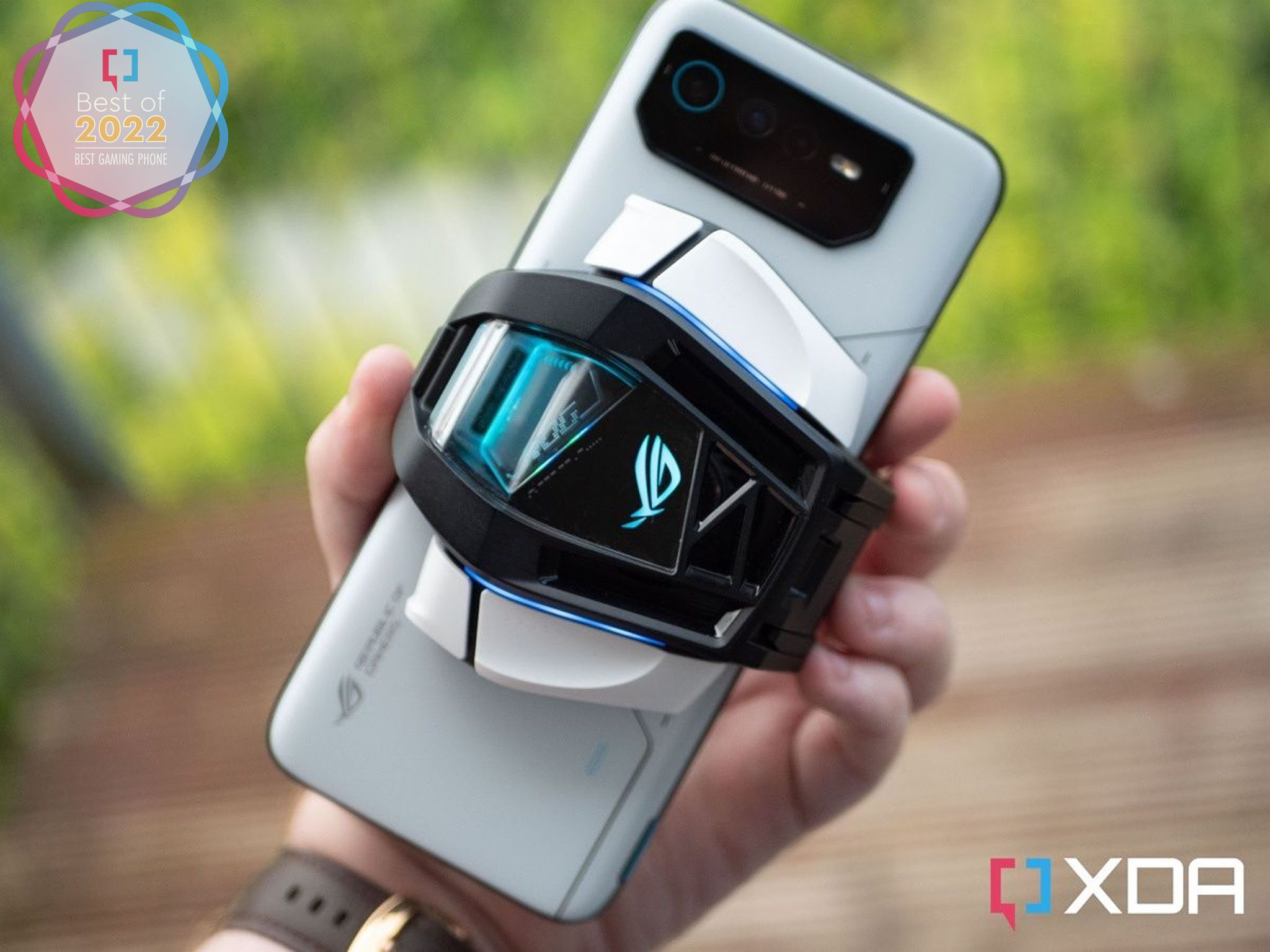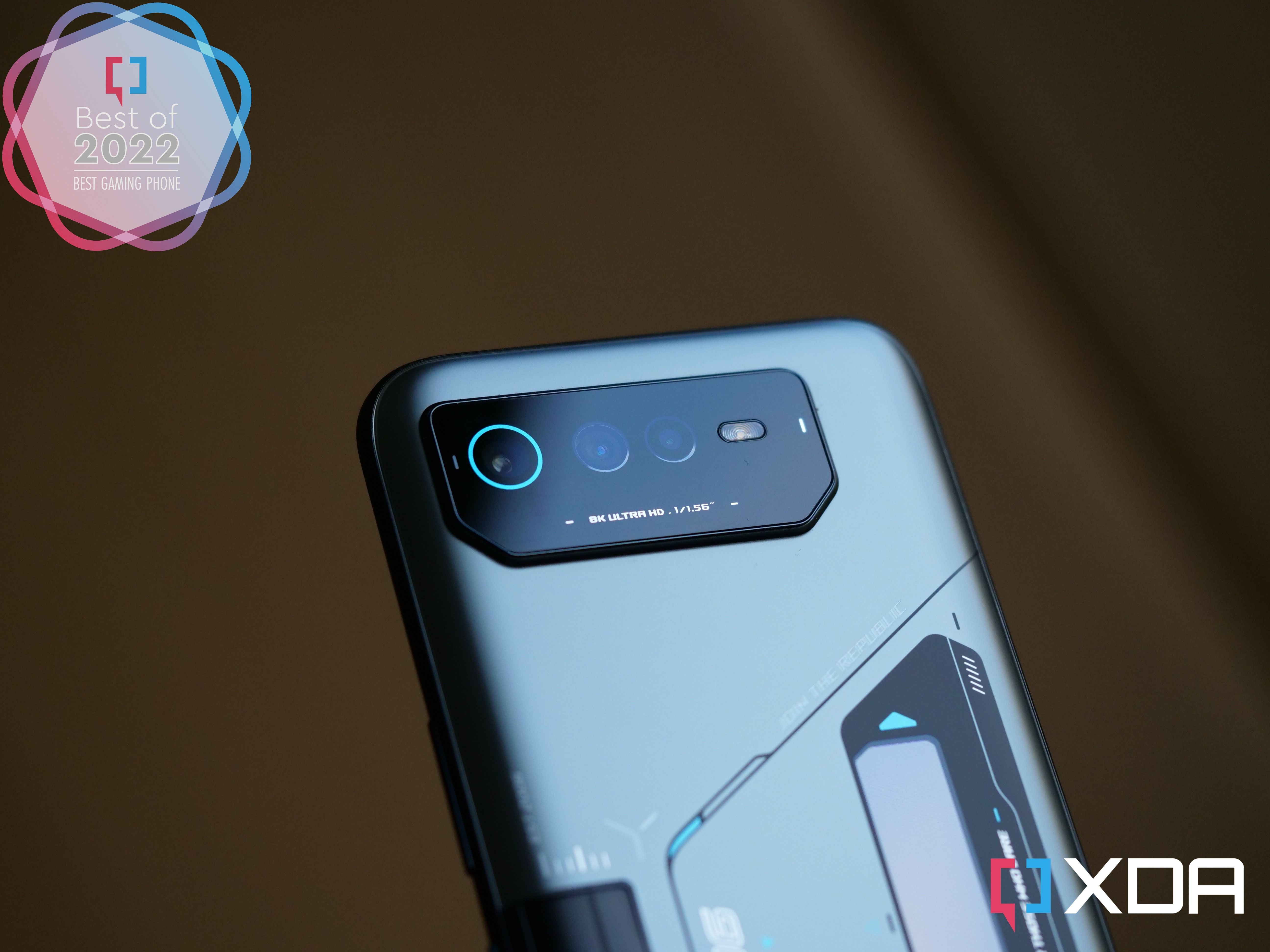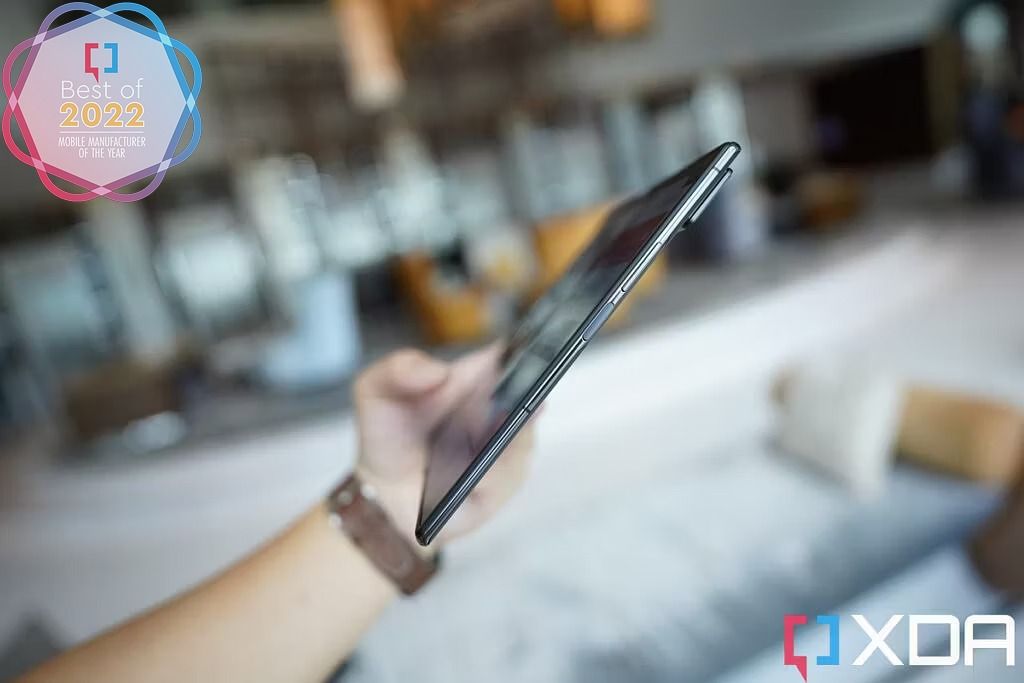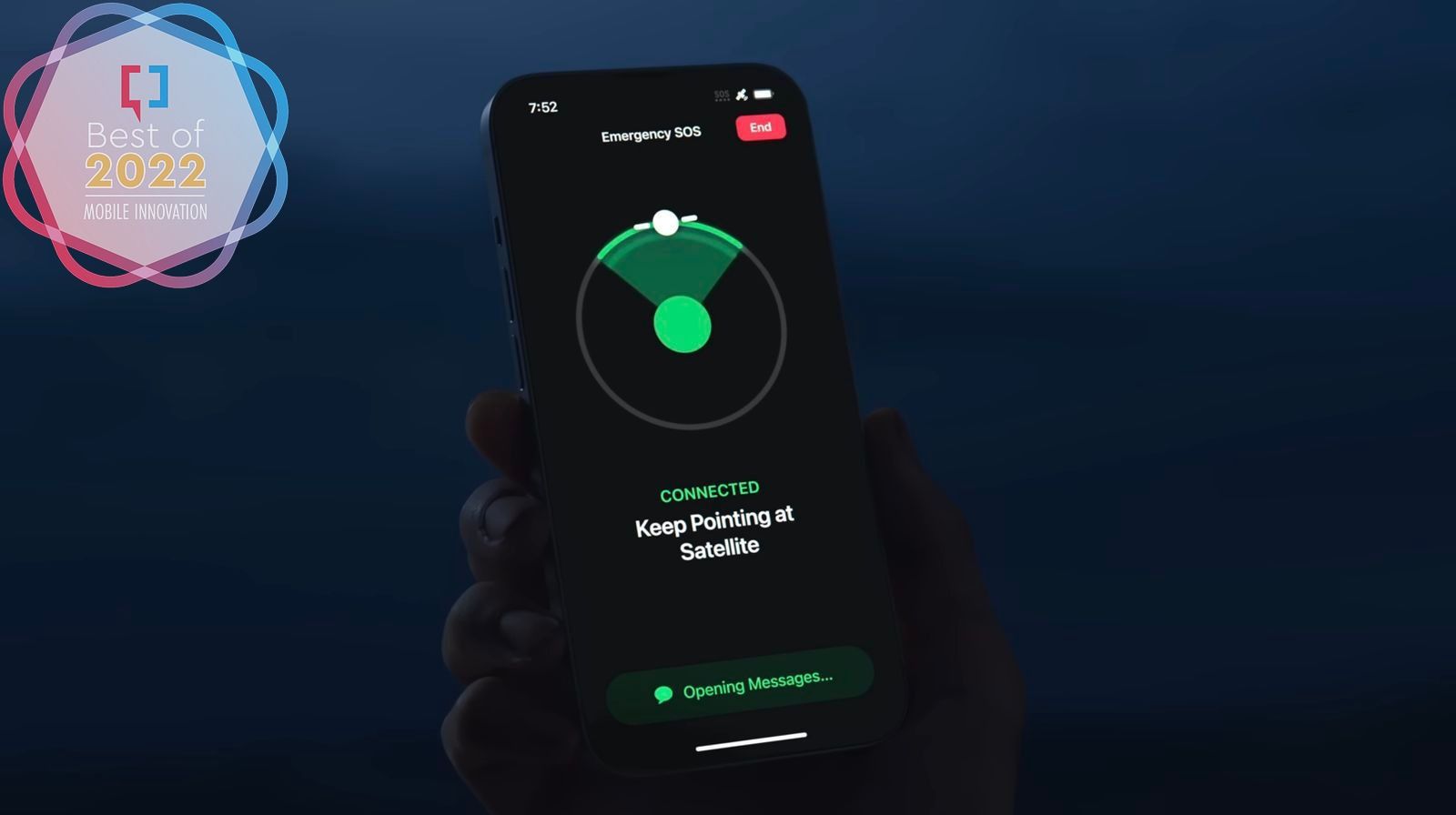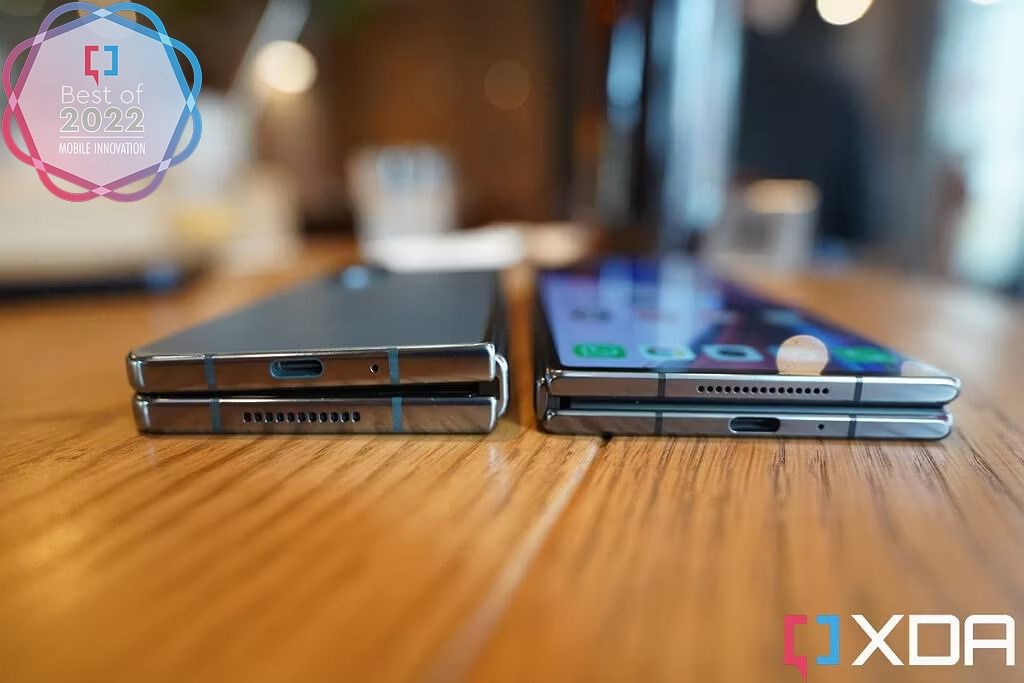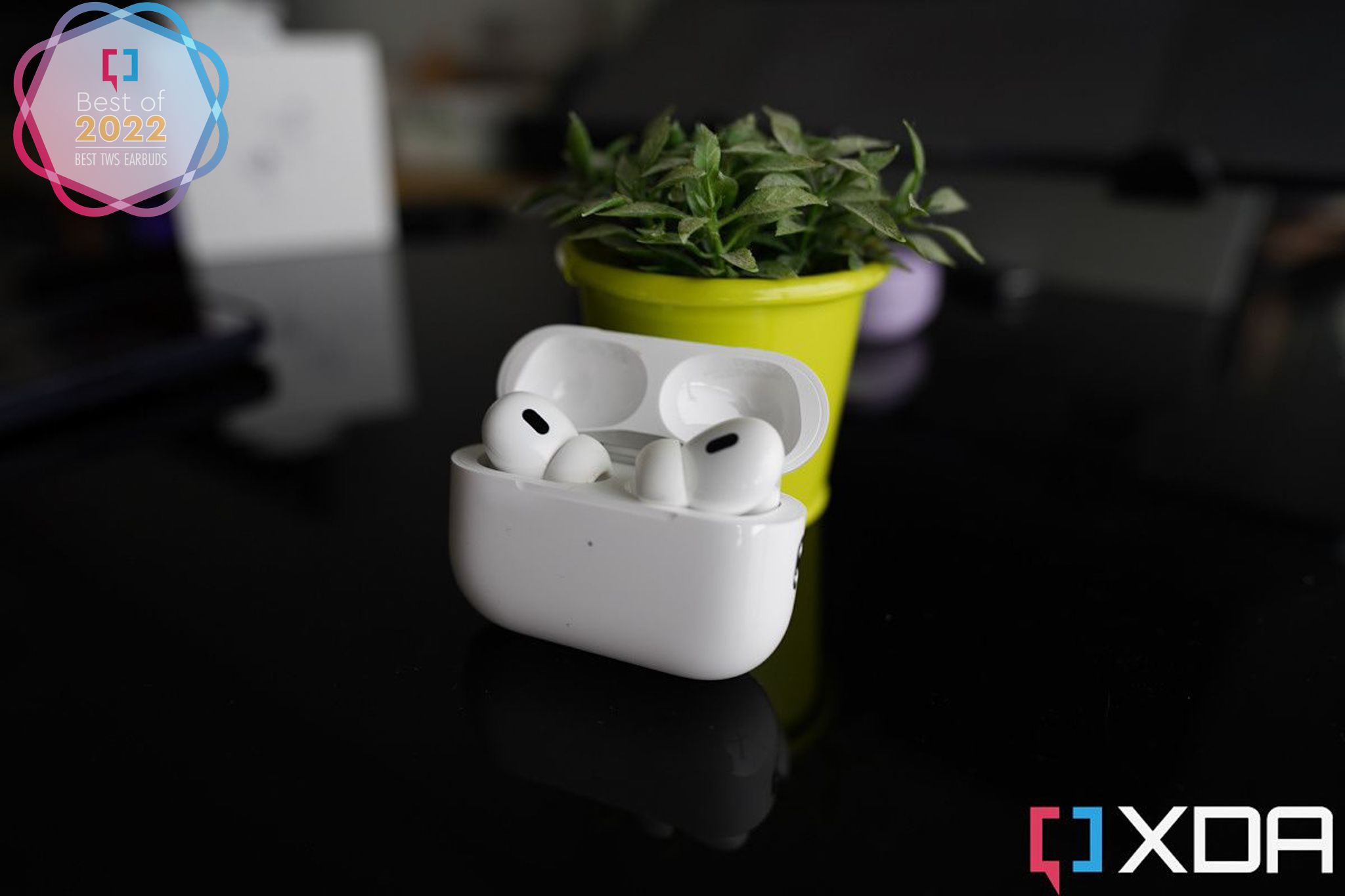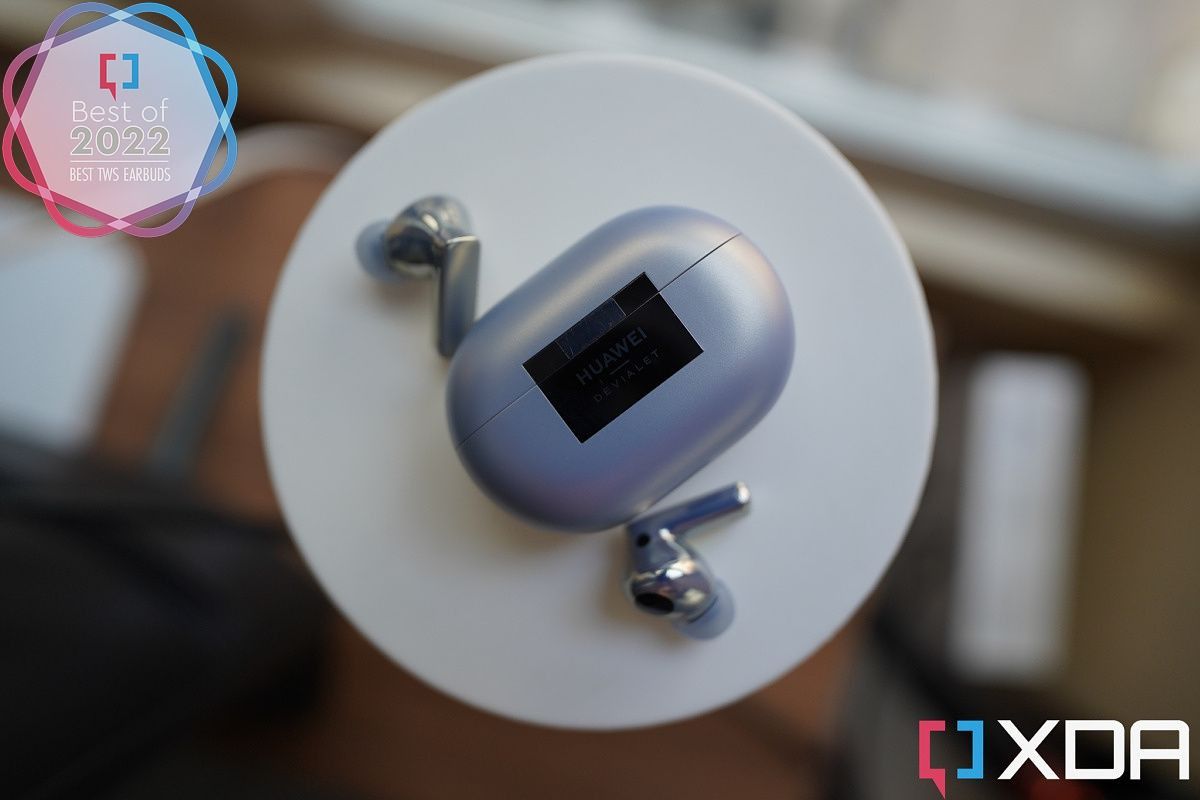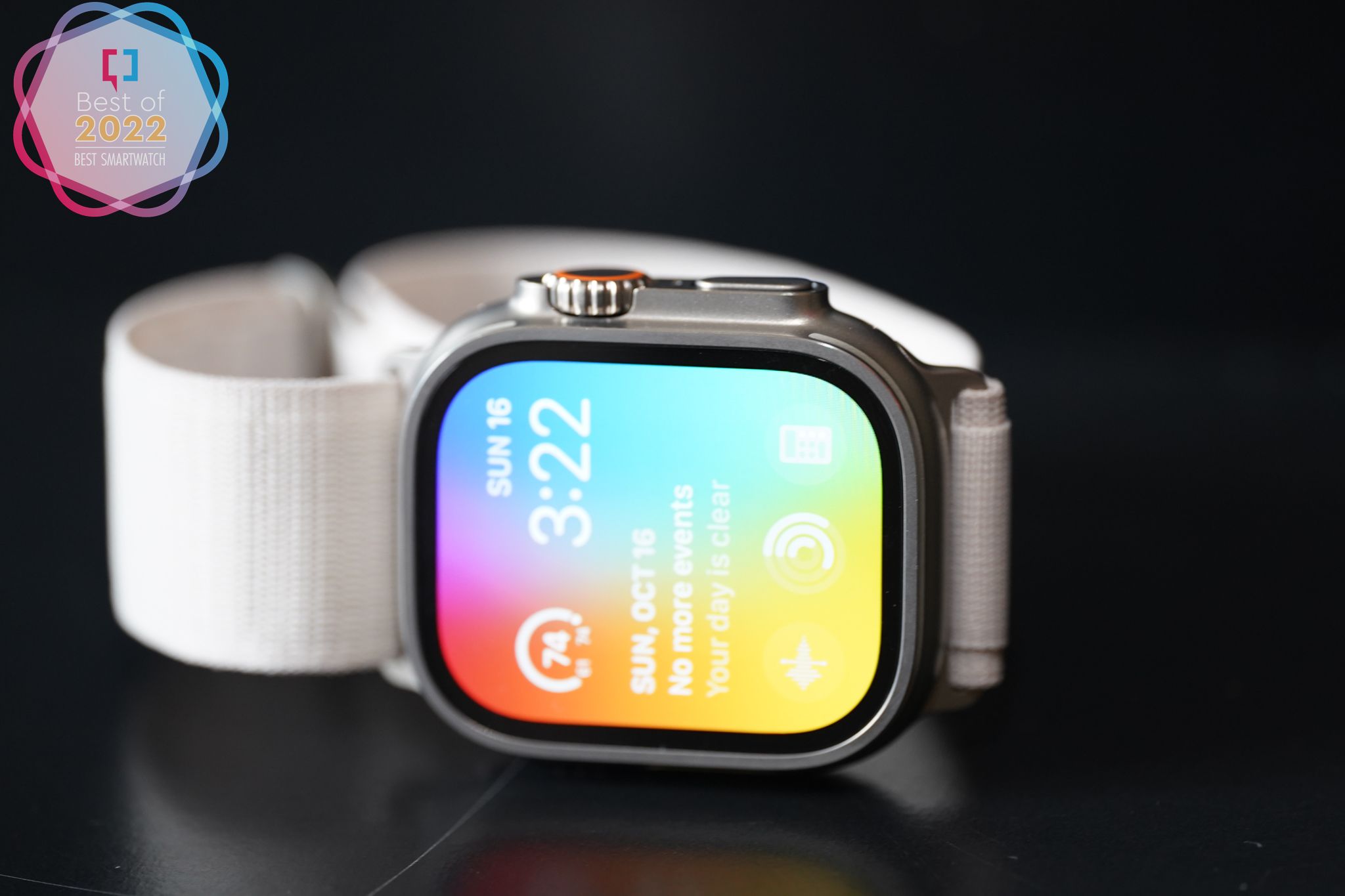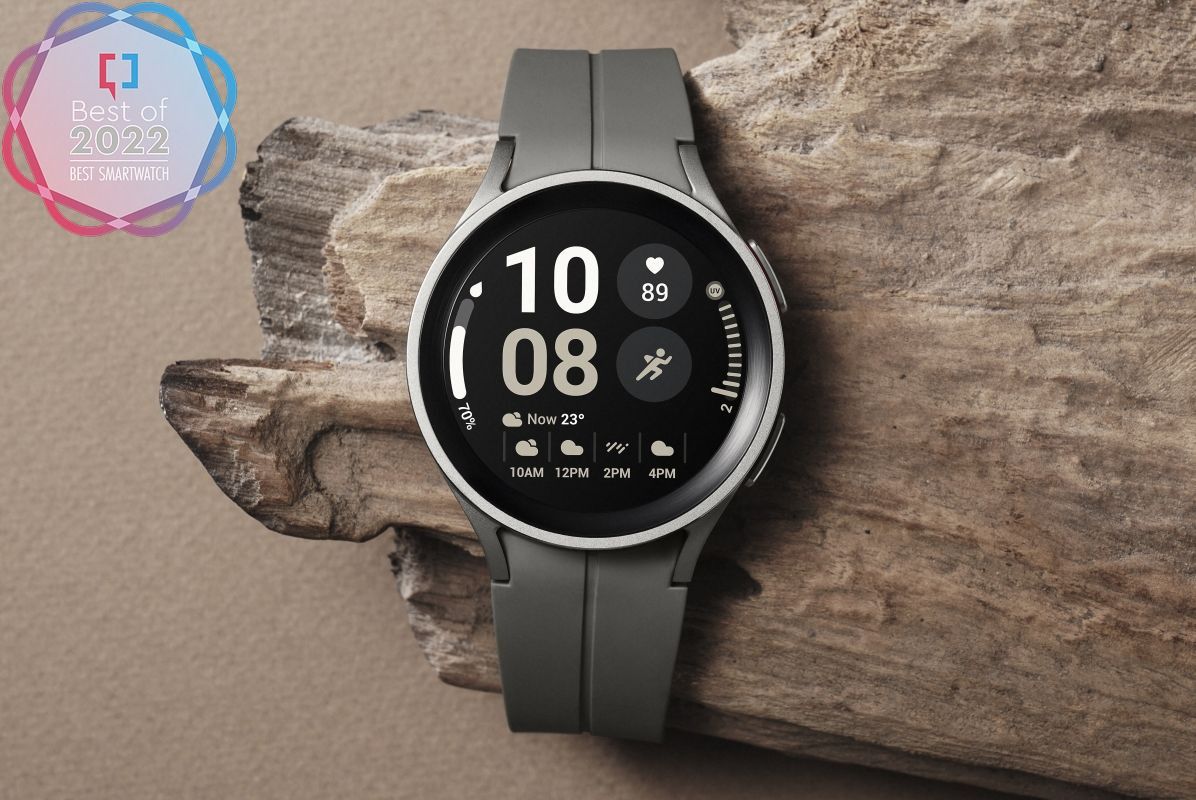Quick Links
This year was a strong one when it came to smartphones. So, with 2022 coming to a close and 2023 just around the corner, we've picked out the best smartphones and accessories that were released this year. From wonderful flagship devices like the Samsung Galaxy S22 Ultra to the completely bonkers Xiaomi 12S Ultra, we've got a bit of everything here. We here at XDA have reviewed just about every smartphone released this year, so we took some time to reflect and asked all of our writers to choose their favorite smartphones of 2022.
Best overall smartphone: Samsung Galaxy S22 Ultra (Snapdragon)
We'll start off strong with the Samsung Galaxy S22 Ultra as our pick for the smartphone of the year... so long as it's the Snapdragon edition. We ran into numerous problems with our Exynos unit that still plague us to this day, and it's hard to give that phone the phone of the year award. However, the Samsung Galaxy S22 Ultra with its Snapdragon 8 Gen 1 doesn't have any of the same problems.
The Samsung Galaxy S22 Ultra comes with a pretty over-the-top camera system with an incredible 108MP sensor, along with 3x and 10x zoom telephoto cameras. You also get a top-of-the-line display and even an S Pen for note-taking, making this not just the best smartphone of the year but the best business smartphone of the year. You'll get updates quickly, too, so long as you have an unlocked variant.
It's really difficult to find fault with the Samsung Galaxy S22 Ultra in general, so it was easy to name this our top pick.
Samsung Galaxy S22 Ultra
The Samsung Galaxy S22 Ultra was one of the most complete Android smartphones on the market in 2022, offering the best screen, the most versatile camera system, the best SoC in Android, and a stylus.
Runner-up: Google Pixel 7 Pro
The Google Pixel 7 Pro is another one of the best smartphones released this year, and part of its appeal is its simplicity. It may not have all the bells and whistles of the Samsung Galaxy S22 Ultra, but it didn't need to. What it does have is clean, solid software, a unique design, and incredible cameras. Google massively upped its game this year with the Pixel 7 Pro, nailing pretty much every aspect.
Google's software is some of the best around, and that's thanks to the features that the company packs in. Quality-of-life features such as Now Playing, which identifies music around you, and voice dictation are two of our favorites, but there's something for everyone here. You'll also get software updates before anyone else, so if that's your prerogative, then it's a better option than even the Galaxy S22 Ultra.
Google Pixel 7 Pro
The Pixel 7 Pro is Google's best phone ever, with a refined, premium design and Google's second-generation silicon — plus awesome cameras, as usual.
Best affordable smartphone: Poco F4
Xiaomi's Poco F4 is a $400 phone with a Snapdragon 870 SoC, 120Hz OLED display protected by Gorilla Glass 5, excellent haptics, great stereo speakers, and a solid camera system. Other than the lack of a dedicated zoom lens and the plastic back, it'd be hard for the average consumer to tell this is an "affordable phone." The only downside is this phone doesn't sell in the U.S., so American consumers can't get this value king easily.
POCO F4
The Poco F4 is an affordable, mid-range phone with a large screen, capable processor, and, the star of the show, an excellent camera with a 1-inch sensor.
Runner-up: Nothing Phone 1
The Nothing Phone 1 received a lot of pre-release hype, and ultimately, it was just a solid, mid-range Android phone with a flashy back design. If that sounded negative, it's not meant to be. At its $470 starting price, the Phone 1 more than delivers, with a Snapdragon 778G SoC, a 120Hz OLED display, and clean, minimal software. The camera performance can be hit or miss and there isn't a zoom lens, but software updates have improved matters a bit in recent months.
Is this phone a game-changer for the industry? No, but is it a really good phone in the sub-$500 price range? Yes. However, it takes the runner-up spot because the Poco F4 has better haptics, slightly better camera performance, and is a bit cheaper.
Nothing Phone 1
The Nothing Phone 1 blends a unique transparent design with powerful hardware. It might not live up to the pre-release hype, but it's still a solid phone at a great price.
Best smartphone camera: Xiaomi 12S Ultra
Much has been made about the importance of camera software in the past half-decade, and while software image processing is indeed paramount to how good a mobile camera is in 2022, the hardware still matters quite a bit. And right now, the absolute best camera hardware arguably belongs to the Xiaomi 12S Ultra.
The 12S Ultra was the first phone to launch with Sony's "1-inch" IMX989 sensor, and unlike Sharp's implementation a few months later, Xiaomi did not crop its sensor at all. Granted, the 1-inch sensor doesn't actually measure 1 inch wide, but whatever the case, the point is Xiaomi's main camera sensor is gigantic compared to the sensors in other smartphones, and that leads to incredible, nearly DSLR-level quality photos since it can capture more light information. The 12S Ultra's other lenses aren't as epic, but they're still quality hardware.
Of course, none of this would matter if Xiaomi's software imaging was terrible, and thankfully, that's not the case. While not as scarily smart as Google's software, Xiaomi's computational photography prowess is good enough to hold off the Pixel 7 Pro, which has better software but inferior hardware, and the Vivo X80 Pro, which also combines excellent hardware and software. It's a close call, but the Xiaomi 12S Ultra is the best camera phone of the year.
Xiaomi 12S Ultra
Xiaomi's 12S Ultra has a whopping 1-inch sensor with Leica optics — and it lives up to the hype. Plus, it has great software.
Runner-up: Vivo X80 Pro
For the runner-up spot, we debated between the Google Pixel 7 Pro or the Vivo X80 Pro. Both phones use nearly identical sensors for their main cameras (the X80 Pro uses a refreshed version of the GN1 used by the Pixel 7 Pro) and have similar Periscope and ultra-wide camera hardware. While Google's computational photography is best in class, Vivo's is no slouch either, with a custom-built V1+ imaging chip that handles HDR better than any phone we've tested (yes, even the Pixel). Throw in Zeiss' T-Coating on every lens (which noticeably reduces lens flare), an extra zoom lens (one that's supported by a micro-gimbal system), and the Vivo's X80 Pro just edges out the Pixel 7 Pro as the second-best camera of the year.
Vivo X80 Pro
The Vivo X80 Pro is a very polished all around smartphone with a camera that can produce better HDR photos than arguably everyone else on the market.
Best foldable: Samsung Galaxy Z Fold 4
You might be thinking that picking the Galaxy Z Fold 4 as the "best foldable phone" seems like a no-brainer decision. For many regions, Samsung's foldables are the only game in town. However, we at XDA have access to foldables released only in China, and those have all been better in some way. Xiaomi's Mix Fold 2, for example, is significantly thinner, while the Oppo Find N has a virtually crease-less screen in a more comfortable form factor.
But Samsung's Fold 4 still takes the win because it has the most polished software of all the aforementioned phones. Part of this is because the Fold 4 runs software optimized for Google apps while China-only releases don't, but Samsung still built a robust and intuitive multitasking system. For example, as awesome as the Oppo Find N is hardware-wise, it suffers from app scaling issues, and can't run YouTube in a horizontal split-screen view. Little things like this, plus the reassurance of a water-resistance rating and official availability worldwide, makes the Fold 4 the best foldable for most people still.
Samsung Galaxy Z Fold 4
The Galaxy Z Fold 4 brings back all the great things about the Fold 3, plus a much better camera system, a slightly wider outside screen, and smarter software.
Runner-up: Oppo Find N
The Oppo Find N is unique because Oppo is a new player and the Find N was the company's first public attempt. Despite that, the Find N was an incredible smartphone that managed to nail what a foldable should be. It was a good smartphone to use in general, and even when it was folded, its cover display was completely usable. Unfolded, you got a lot more screen real estate, and the software was built around its foldable capabilities.
The phone itself was also compact, not being all that much thicker than a regular smartphone. It has an excellent form factor, and in a world where foldable phones often take a step back in their photography prowess, the Find N kept the same primary sensor as the Oppo Find X3 Pro. It's an excellent first shot at a foldable smartphone.
Oppo Find N
The OPPO Find N is a foldable that's neither too big nor too small, and it has a mostly crease-free screen.
Best gaming smartphone: Asus ROG Phone 6 Pro
If you like to game on your smartphone, then the Asus ROG Phone 6 Pro should be your go-to pick. It's perfect in so many different ways. It's fast, the battery life is excellent, and there's a wide range of peripherals that you can pick up. Performance is second to none, and there's even a headphone jack.
Of course, if you like to use your smartphone for, well, smartphone-related things, then the Asus ROG Phone 6 Pro does all of that well, too. The camera isn't even all that bad, though it's noticeably the weakest part of the entire package. Still, if you want the best phone for gaming (and one of the best phones, period), then you can't go wrong with this amazing device.
ASUS ROG Phone 6 Pro
ASUS ROG Phone 6 Ultimate is, as the name implies, the ultimate gaming phone with up to 18GB of RAM, a Snapdragon 8+ Gen 1 processing platform, and a 165Hz display. It also has unique gaming-centric features like a thermal system to keep you going for many hours.
Runner-up: ASUS ROG Phone 6D Ultimate
Though it's a cheaper smartphone than the Pro, the Asus ROG Phone 6D Ultimate isn't really the ultimate gaming phone. It packs a MediaTek Dimensity 9000 Plus (hence the cheaper price tag), but that's about the only difference. While MediaTek's flagship chip is incredible, it's still behind the Snapdragon 8 Plus Gen 1 that's in the regular Pro. There is an air vent as well, and the AeroActive Cooler 6 comes in the box.
In general, if you want a smartphone that'll provide you with gaming-focused features, you'll want to check out Asus's ROG lineup. And if you want to save some money, you can go with the 6D Ultimate.
ASUS ROG Phone 6D Ultimate
The Asus ROG Phone 6D Ultimate is the same phone as the Asus ROG Phone 6 Pro, but with a MediaTek Dimensity 9000 Plus instead.
Mobile manufacturer of the year: Xiaomi
2022 can be considered an iterative one for most phone brands, except Xiaomi. While Samsung, Google, and OnePlus released flagships that brought back virtually the same hardware as their 2021 predecessors, Xiaomi either introduced or co-developed, two bleeding-edge tech breakthroughs that set the stage for 2023 devices.
The first is the aforementioned 1-inch image sensor. Even though the sensor is made by Sony, Xiaomi apparently contributed $15 million to help fund the development of the lens. The second big hardware breakthrough was the Mix Fold 2, which at 5.4mm unfolded and 11.2mm folded is the thinnest foldable phone by some distance. The Mix Fold 2, in fact, is so uncannily thin, it is barely thicker than a Pro Max iPhone inside its case.
These two hardware innovations alone would have been enough to nab Xiaomi the top spot here, but when you consider the company also released arguably the best value budget phone this year, Xiaomi's placement feels like a no-brainer. Now, if only it would start selling its awesome products in the U.S.
Runner-up: Samsung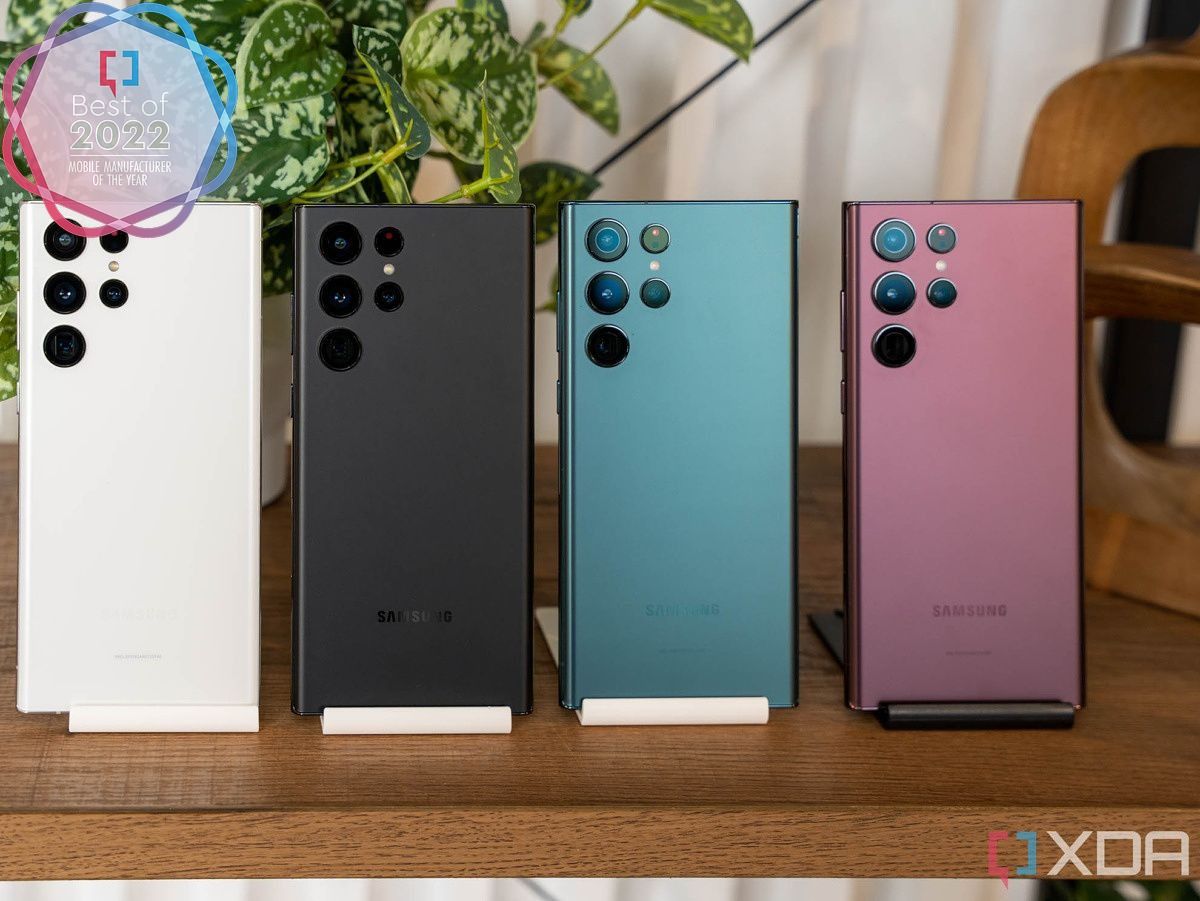
It's easy to look at Samsung's 2022 mobile releases and conclude it was a rather boring year for the South Korean tech giant. Whether it was the Galaxy Z Fold 4, Z Flip 4, the Galaxy A53, or the standard non-Ultra S22 phones, Samsung mostly brought back the same hardware from last year, save for the processor bump. However, all of these phones saw more polished software, longer battery life, and a bit better low-light camera performance, which all combined to make them the best versions of those phones yet.
Look a bit deeper, and we can see Samsung also took some calculated risks. The Galaxy S22 Ultra was essentially a rebirth of the Galaxy Note. The inclusion of the S Pen alone made the device a must-own for some. Meanwhile, Samsung launched a new Ultra version of its tablet series, one with a gigantic 14.6-inch OLED display. Paired with Samsung's pricey but excellent keyboard case and with Samsung DeX, the Galaxy Tab S8 Ultra could serve as a real functional computer for some. Elsewhere, the Galaxy Z Fold 4 saw much-improved optics and software, further cementing it as the best foldable phone on the market. Samsung's 2022 was not immediately flashy, but it's been a lowkey strong year.
Best mobile innovation: Apple's Emergency SOS via satellite
There were several mobile innovations we at XDA enjoyed using this year, but the best new feature is one we haven't used yet and hope will never have to. Apple introduced an Emergency SOS feature for the iPhone 14 series that allows the phones to connect with emergency services, even if there's no cell reception or data connectivity, via the satellites built into the devices. It's easy to see why this could be a lifesaver. However, this feature is free for only two years (after which Apple will charge) and right now only works in selected countries. Still, this is a major feature that we hope all mobile phones adopt in near future.
Runner-up: Xiaomi's really thin foldable
As we wrote earlier, Xiaomi's Mix Fold 2 was a breakthrough for foldable phones as it drastically shed the thickness that had been considered a design compromise. The Mix Fold 2 measures only 5.4mm thick when unfolded so even when it's folded, it is still barely thicker than a slab phone. The Mix Fold 2 is the first foldable phone to not really feel like two pieces of metal stacked together when closed. Once you've held the Mix Fold 2, it's hard to go back to a thicker foldable and not feel the bulk.
Best true wireless earbuds: AirPods Pro 2
The AirPods Pro 2 are the best wireless earbuds for most people, even if you don't use an iPhone. With four silicon ear tips (most other earbuds offer three), a new H2 chip that can handle active noise cancelation, and redesigned audio drivers, the AirPods Pro 2 are some of the best-sounding earbuds we've ever tested at XDA. It also has arguably the second-best active noise cancelation in the business, behind only the uncanny Bose QuietComfort EarBuds 2, which didn't make the list because the AirPods Pro 2 have a better transparency mode and features like Spatial Audio.
These features are what make Apple's earbuds king. You can even buy a pair if you don't use an iPhone. From our testing, the AirPods Pro 2 connects with Windows machines or Android devices fine. And while you lose out on some specific features like Spatial Audio, you're still getting best-in-class transparency mode, and tremendous ANC and audio quality.
Apple AirPods Pro 2
Despite their compact build, the AirPods Pro 2 pack in plenty of features, including active noise cancelation (ANC), Dolby Atmos content, and wireless charging.
Runner-up: Huawei FreeBuds Pro 2
Huawei has been making some of the best wireless audio products for a couple of years, and the company's premium buds, the FreeBuds Pro 2, are among the best earbuds on the market. We are a fan of their lighter, sleeker design compared to the first generation. Measuring just 6.1g per bud and with a sleeker, shorter stem than the AirPods Pro 2, the FreeBuds Pro 2 look a bit more stealth in our ears — and this factors in the eye-grabbing purple color.
Thanks to a partnership with Devialet that helped fine-tune the 11mm dual drivers, the FreeBuds Pro 2 pump out superb balanced audio, with clean highs, crisp mids, and a bit of bass kick. However, we find that its ANC doesn't work as well at blocking out unwanted outside noise as the AirPods Pro 2, hence why it falls in this runner-up spot.
HUAWEI FreeBuds Pro 2
The Huawei FreeBuds Pro 2 are an excellent pair of noise-canceling earphones with amazing sound quality and a lot of audio customization features. They stand out from the crowd, too, thanks to their unique and shiny colors.
Best smartwatch: Apple Watch Ultra
The Apple Watch has been the best smartwatch for years, mostly due to the hardware/software synergy and app ecosystem. While Samsung and Google released strong alternatives this year, we'd still have to go with the Apple Watch again this year, particularly since Apple basically threw everything but the kitchen sink at the Apple Watch Ultra.
This new watch packs in features that are designed to make life easier for mountaineers, deep sea divers, endurance sports athletes, and people who don't spend their days in front of a laptop screen. Most of us at XDA are none of these things, but even we can see the appeal. It's got a bigger, brighter screen that's easier to read even from a distance or under the most intense sunlight. It's built like a tank, so you won't stress if you accidentally clang your wrist against table edges. Finally, battery life is much, much better. Factor in the superior Apple Watch app ecosystem and safety features like the ability to detect car crashes, and the Apple Watch Ultra is easily the best smartwatch around. It is, of course, very expensive, at $799.
Apple Watch Ultra
The Apple Watch Ultra is the highest-end smartwatch Apple makes. It's not for everybody, but if you spend a lot of time outdoors, are a serious athlete, or just want the ultimate protection, this is the watch to pick.
Runner-up: Samsung Galaxy Watch 5 Pro
The Galaxy Watch 5 Pro is Samsung's biggest and most durable smartwatch ever, and like Apple's Watch Ultra, it's intended for people who enjoy doing rugged outdoor activities. We are fans of the raised bezel that protects the screen and the 3-4 day battery life on a single charge.
The Galaxy Watch 5 Pro is also excellent at fitness tracking, including the ability to detect body fat percentage, a metric most smartwatches can't measure yet. However, Samsung's wearable software is still a bit clunky, requiring downloading multiple plugins, and the app ecosystem can't match the Apple Watch's. Still, the Galaxy Watch 5 Pro is more affordable, and if you're on an Android device, this is an easy option.
Samsung Galaxy Watch 5 Pro
The Galaxy Watch 5 Pro is aimed at fitness enthusiasts, packing a more durable design and a bigger battery than the standard Galaxy Watch 5.
2022 was a good year; 2023 should be better
Overall, 2022 was a good year for mobile. Even if Samsung and Apple didn't bring wholesale innovation to their smartphones, both companies further refined their flagships. Xiaomi introduced important features that the industry can't ignore, and the smartwatch industry took a step forward with not just premium Apple and Samsung offerings, but a Google watch too.
We think 2023 will be more exciting, as more brands release foldables — some even internationally — and that 1-inch sensor makes its way to more Android flagships. Samsung is said to be going with a 200MP camera for its Ultra flagship too, so we may see another step forward in mobile camera improvements. Meanwhile, Apple and Google will continue to improve its silicon for superior performance and hardware/software synergy.

